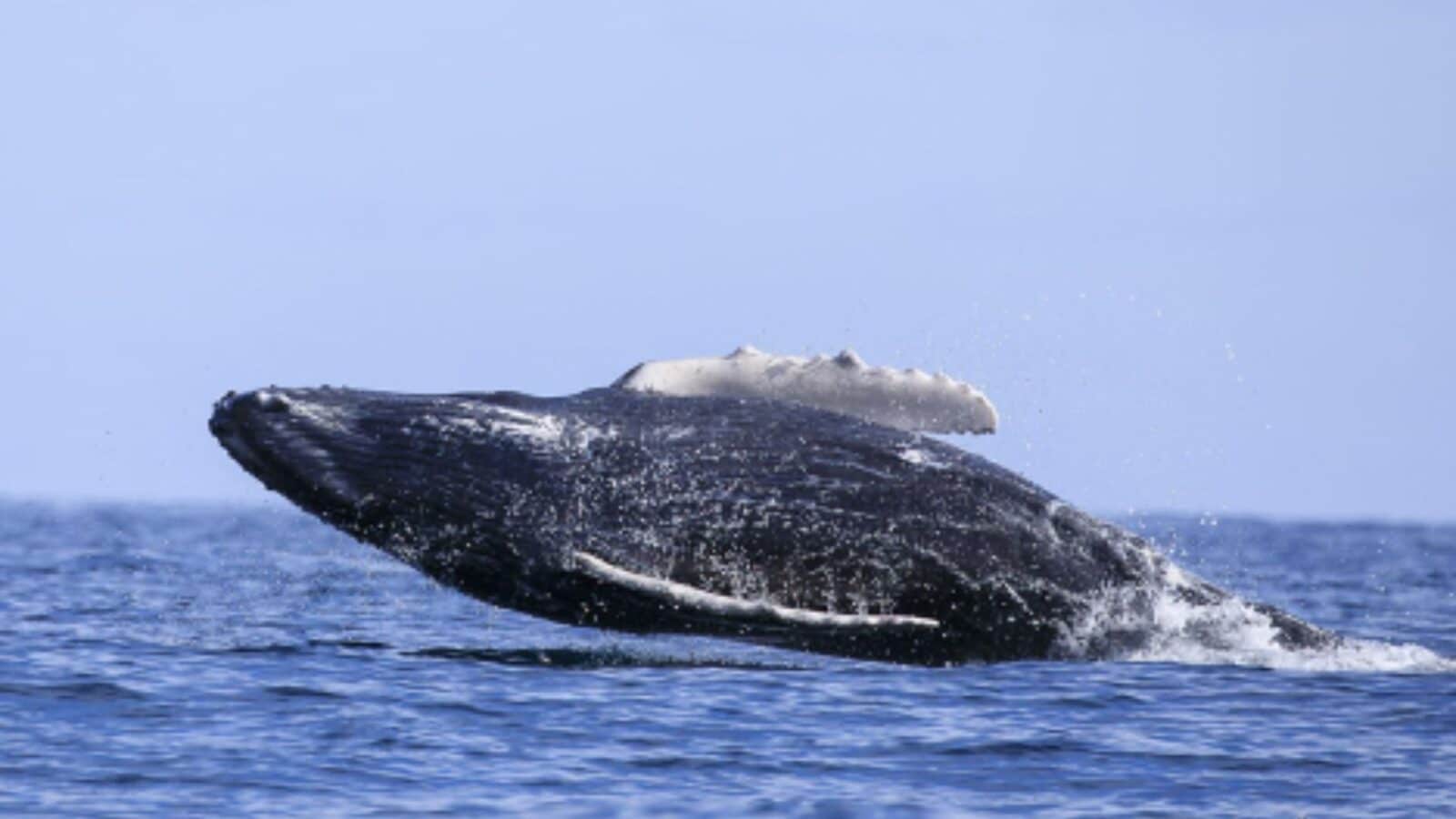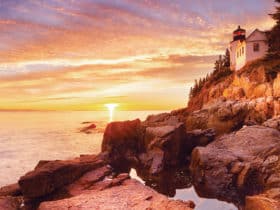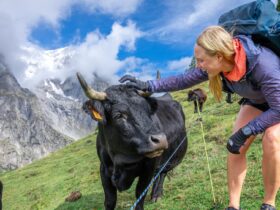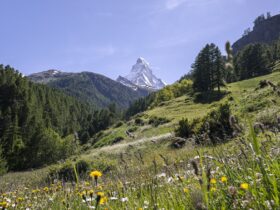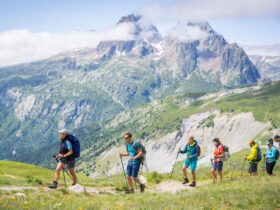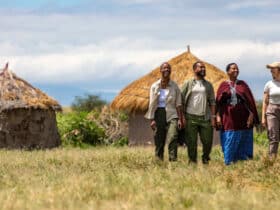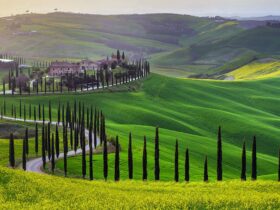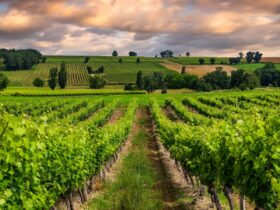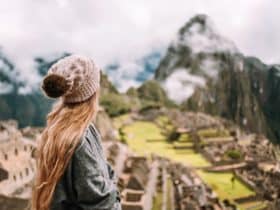I went on Lindblad Expeditions’ seasonal Baja California: Among the Great Whales sailing, and just as the tour name suggests, there were a lot of opportunities to take pictures of whales (and other wildlife including dolphins, sea lions, and birds).
But taking photos of whales comes with a whole set of challenges, chief among them that whales come up above the surface unpredictably, often far from where you are, and only for brief moments.
SURPRISE SHIFT: How a Group Tour Changed My Whole Approach to Travel
But amateur (and pro) photographers are well-supported on this expedition cruise. A National Geographic certified photo instructor is along on every voyage and gives lessons and presentations in the lounge, leads photo walks, oversees the Gear Locker lending program, and is around to give pointers and coach aspiring photographers. In that way, it’s like going on a photography tour while getting all the other aspects of a more general tour as well.
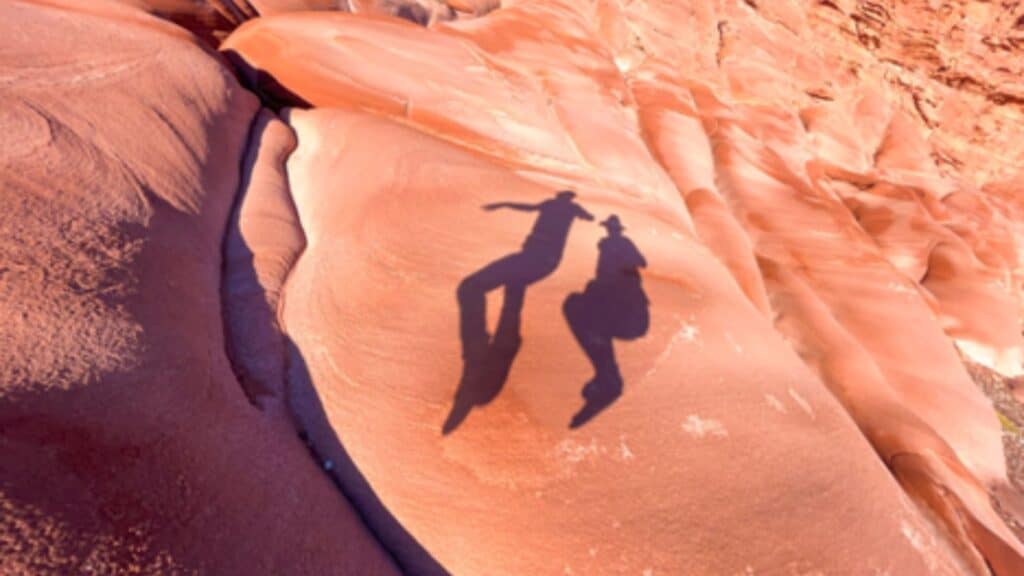
On a quiet afternoon between activities, I sat down with Jeff Litton, the Nat Geo photo instructor on my sailing. “My goal is to inspire people to think of themselves as photographers, and to give them the tools to take better pictures on vacation and at home.” Litton loves that helping people hone their skills here can help them take better photographs for the rest of their lives.
ADVENTURES ON FOOT: Our Favorite Walking and Trekking Tour Companies
Part of his teaching style is to do what he calls “shooting out loud” on photo walks—talking through the things he’s noticing, the settings he’s using, and the compositional features he’s capturing. “People have a natural reluctance to consider themselves photographers, but everyone with a camera is a photographer,” he says, even kids. “Teaching kids how to take a photo is teaching them to see.”
Tips for Taking Great Photos While Whale Watching

Here are Litton’s tips for taking great photos while whale watching.
Opt for a Fast Shutter Speed
Litton says there are five big reasons to manually bump up the shutter speed when you’re taking photos of whales (or dolphins, or any other fast moving wildlife): “You’re shooting from a moving platform like a boat; it’s windy, which shakes the camera; you’re zooming in and the more you zoom, the more you’re amplifying the movement in your hand relative to the frame; your subject is in motion so it’s easier to capture that motion with a fast shutter speed; and if you’re shivering, that also shakes the camera.” Using a fast shutter speed like 1/2000th of a second will reduce the number of blurry photographs you end up with.
Shoot on Burst Mode
By setting your camera to burst mode, you increase the chances of getting that magic moment when the whale leaps out of the water, flips its tail into the air, or seems to defy gravity with its graceful spyhopping. These moments fly by in reality—they only last a second or two—and getting as many photos of the moment as possible is a lot easier with burst mode.
Manual f-Stop, Auto ISO
For whale watching, Litton recommends using a mix of manual and auto settings. “Usually, I’m using manual settings to pick my shutter speed and aperture.” For daytime whale watching, he suggests a smaller f stop number—but not the smallest because the image won’t be as sharp. Relying on Auto ISO usually works best, he says, noting that this is one of those times when “you can usually use higher ISOs and get away with it.”
Use Continuous Focus
Continuous focus settings on SLR and DSLR cameras are “designed for taking photos of moving subjects,” says Litton. By not relying on manual focus, you’re able to capture split second moments faster than your hand could focus.
The continuous focus setting (different cameras have different names for it, so look up what yours is in advance) continually adjusts the focus in the frame as long as you’re holding the button, so it’s ready to go when you take the picture. Furthermore, many new cameras even have special tracking modes that are helpful.
Set Your White Balance to Daylight
Because the water is highly reflective and you’re likely whale watching during the day, whether it’s sunny or overcast, you’ll want to set your camera’s white balance to that sun icon.
When you leave the white balance on auto, the “camera is trying to determine whether or not to take out some saturation and richness,” which you don’t want, says Litton. By adjusting the white balance to the daylight setting, you’re giving it a clue about the color temperature, which will help the camera capture more true-to-life colors
Take Some Video, Too
Litton suggests mixing in some video as well. He loves video because it “can help capture the experience, the feeling of being there, and the animals’ behavior. And that’s what travel photography is all about—capturing the feel and emotions of the place.”
Don’t Forget to Put the Camera Down
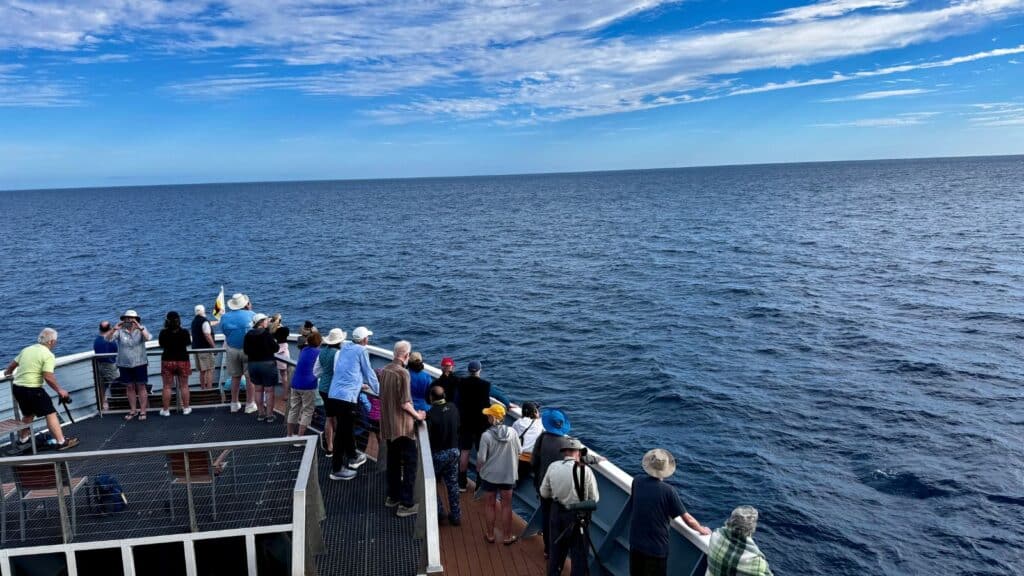
Working as a ship photographer, Litton sees every day what he calls the “tonic of wildness; how restorative and fulfilling it can be to just be out in nature.” Whether you’re whale watching from shore, on a day outing, or on a multi-day trip, Litton reminds you to sometimes put down the camera and just soak up the experience of being close to these incredible creatures as they curve in and out of our above-water world.



